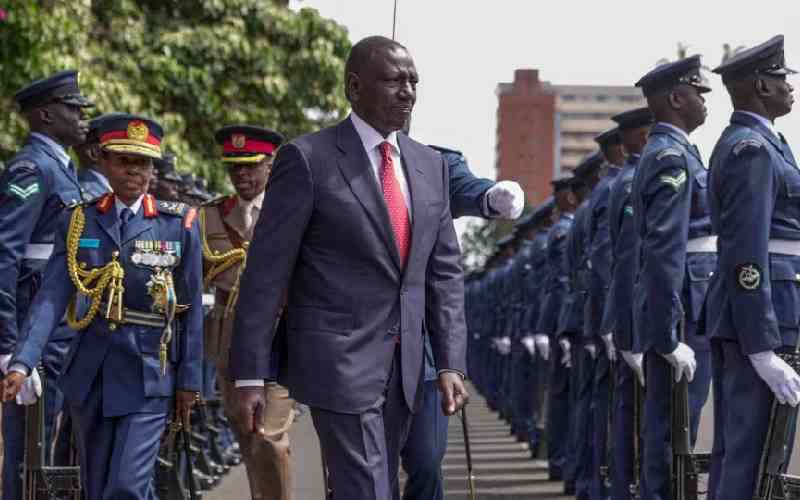Kenya’s Sondu Miriu Hydroelectric Power Station has inspired the construction of a new power plant that brings together three countries in the Nile Basin region.
The Rusumo Falls Hydroelectric Power project located on River Rusumo on the border between Rwanda and Tanzania will serve the two countries and Burundi where River Ruvuvu, a tributary, originates.
River Kagera from Tanzania is the remotest headstream of the Nile River and passes through the three countries before draining into Lake Victoria via Uganda.
The project is an initiative of the Nile Basin Initiative (NBI), an interstate partnership bringing together 10 countries that either supply or lie on the path of the Nile River’s waters. “River Rusumo will be diverted into a tunnel of about one kilometer.
The water will then run the turbines and generate electricity before going past the powerhouse and rejoining the main river course at the tail end”, said Engineer Alloyce Oduor, of the project that commences construction in the first quarter of 2017.
Eng Oduor is the Power Engineer at the Nile Equatorial Lakes Subsidiary Action Program (NELSAP), a subsidiary of NBI that coordinates joint development programs in the Nile Basin states.
Source of harmony
For the Rusumo Power project, NELSAP helped the three states form a Special Purpose Vehicle (Rusumo Falls Hydroelectric Project) that will run the facility on behalf of the three states.
Construction of the power station commences in the first quarter of 2017 with transmission slated to begin in December 2019.
The project will cost $470 million financed through a $340 million loan from the World Bank and $130 million from the African Development Bank.
“These types of projects promote cooperation when countries come together for joint investment … Ultimately the river should be a source of harmony for the riparian states, not conflict … It’s a sign of a bloc uniting for peace and benefit, which is our objective,” said Engineer Innocent Ntabana, the Executive Director at NBI.
The plant will produce 80 megawatts of power shared equally between Rwanda, Tanzania, and Burundi (26.6 MW each).
It will have a 220 KV transmission line single circuit running 161 kilometers to Gitega in Burundi, an 119-kilometer double circuit line to Shango in Rwanda and a 98.2-kilometer double circuit to Nyakanazi in Tanzania.
Once operational, the project will employ 1000 people; provide power to an estimated 1.2 million people in the three countries and increase electricity access rates by 5.4% in Burundi, 4% in Rwanda and 0.3% in Tanzania.
These beneficiaries are in addition to landowners compensated for loss of land due to the project, “We all examined their offer and agreed that the compensation was commensurate and we signed. The project is very important because African countries are entering a period of industrialisation and they need electricity to run industries, sustain technology and at home for personal use”, said Crispin Kamgisha, a landowner near the Rusumo falls.
Run -of river
The Rusumo Power plant is a run-of-river hydroelectric power plant just like the Sondu Miriu Complex in Kenya that uses the diverted Rivers Sondu/Miriu, a tunnel and a turbine system anchored on a head (hill, cliff or gently undulating land mass), to generate power.
Compared to the Sondu Miriu Power project, Rusumo will produce more electricity as a unit but the same as a power complex.
The turbines at Rusumo will churn out 80 megawatts of power to serve three countries, while the Sondu turbines produce 60 megawatts.
However, the Sondu Miriu complex recently expanded to accommodate a new power station downstream, the 20 megawatts Sang'oro Hydroelectric Power Station that uses the water discharge from Sondu Miriu.
The Nile Basin Initiative (NBI) is an interstate partnership of 10 riparian Nile countries (Burundi, DRC, Egypt, Ethiopia, Kenya, Rwanda, South Sudan, Sudan, Tanzania, and Uganda) with the aim of achieving sustainable socio-economic development through the equitable use of the Nile Basin waters.
Formed in 1999, the partnership provides a platform for the Basin States to discuss how to collectively take care of and use the shared Nile Basin waters and related resources.
 The Standard Group Plc is a
multi-media organization with investments in media platforms spanning newspaper
print operations, television, radio broadcasting, digital and online services. The
Standard Group is recognized as a leading multi-media house in Kenya with a key
influence in matters of national and international interest.
The Standard Group Plc is a
multi-media organization with investments in media platforms spanning newspaper
print operations, television, radio broadcasting, digital and online services. The
Standard Group is recognized as a leading multi-media house in Kenya with a key
influence in matters of national and international interest.
 The Standard Group Plc is a
multi-media organization with investments in media platforms spanning newspaper
print operations, television, radio broadcasting, digital and online services. The
Standard Group is recognized as a leading multi-media house in Kenya with a key
influence in matters of national and international interest.
The Standard Group Plc is a
multi-media organization with investments in media platforms spanning newspaper
print operations, television, radio broadcasting, digital and online services. The
Standard Group is recognized as a leading multi-media house in Kenya with a key
influence in matters of national and international interest.





